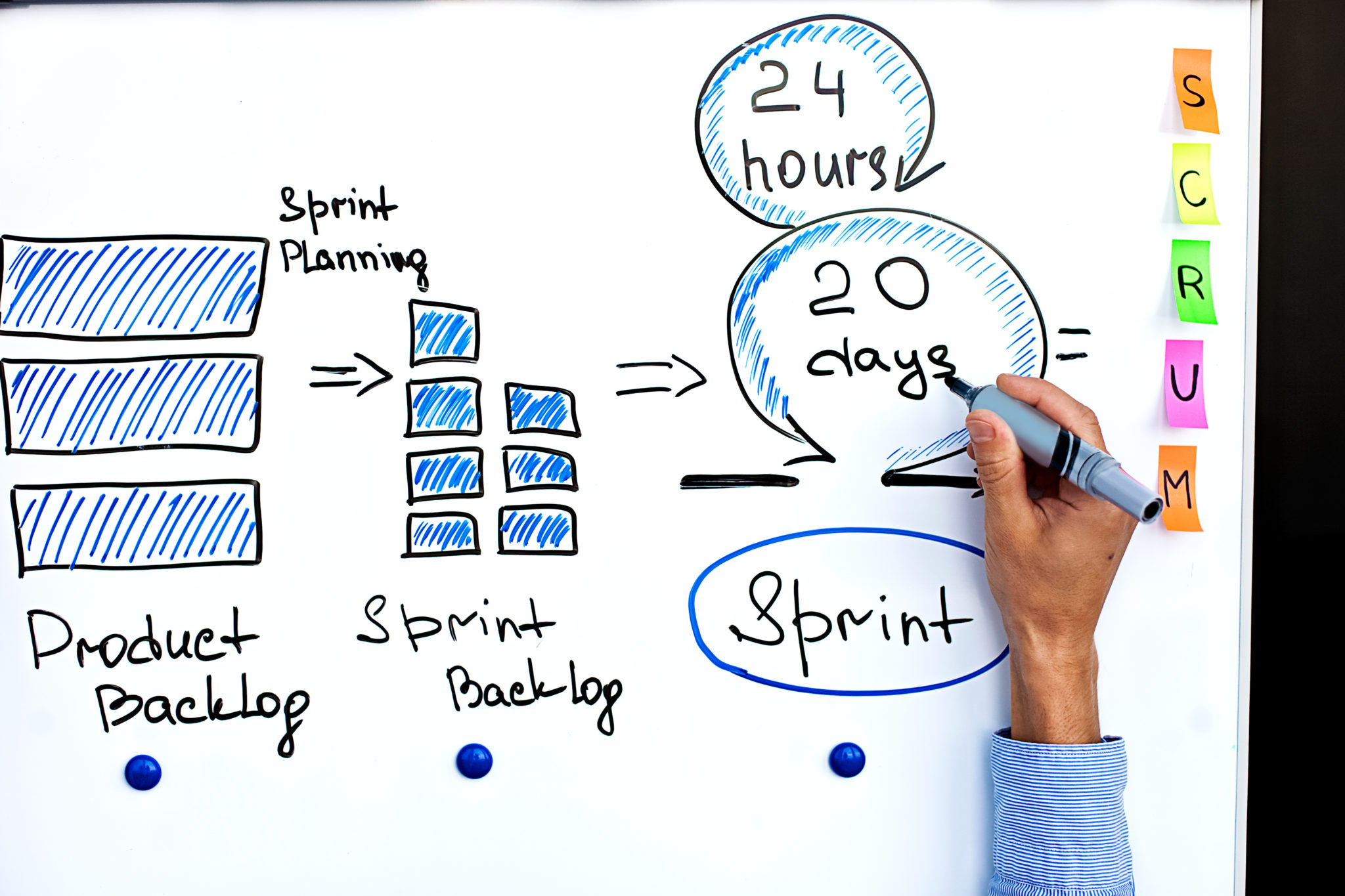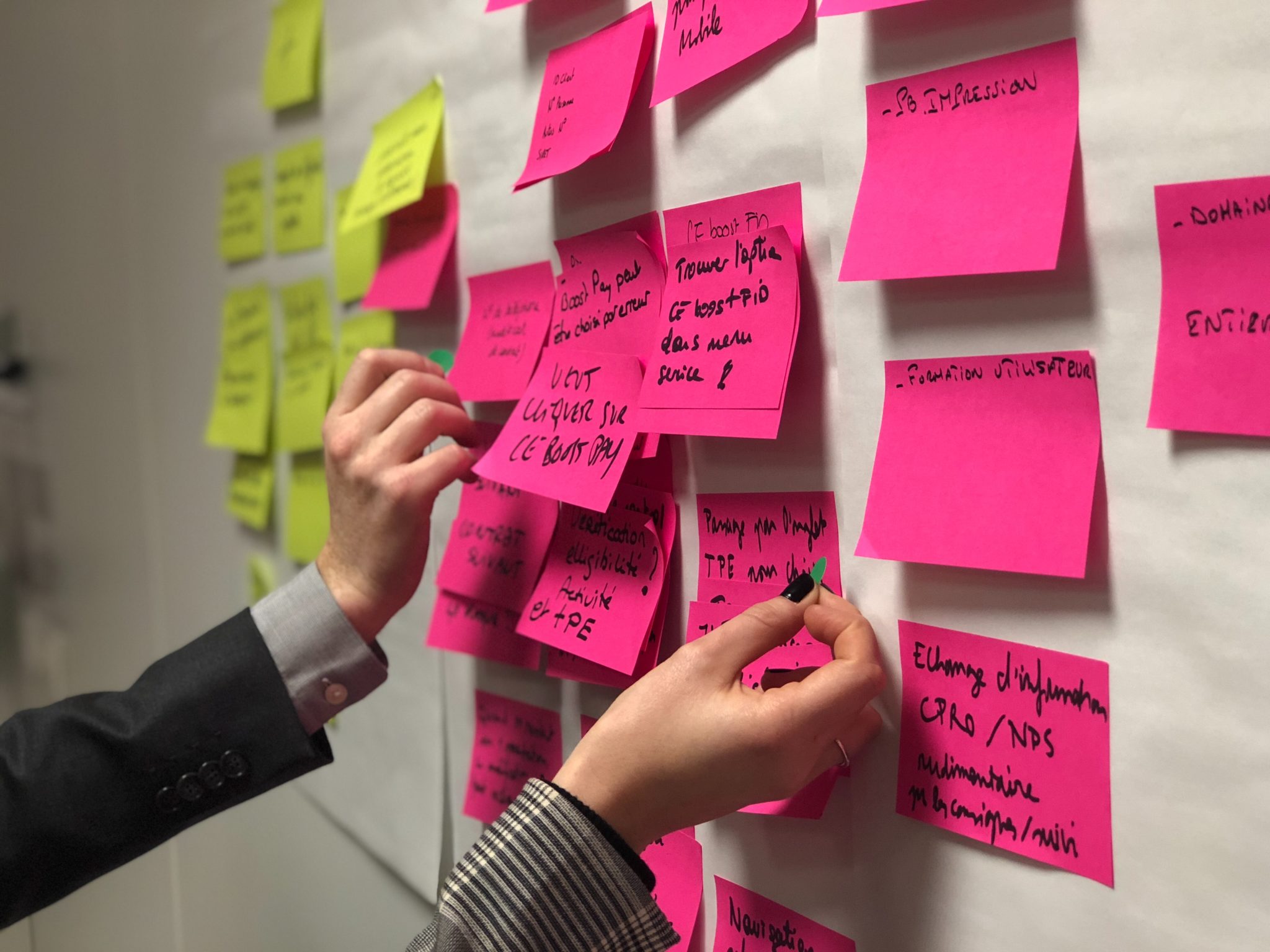Scrum, simply put, is a framework, or guide, that is being used more and more frequently both within and without the Software-industry world. Why? Very simply, it helps us to learn while the process is developing thanks to its effective organization.
Scrum: 3 Fundamental Pillars
Scrum is a framework used in the development of products in complex, uncertain and ambiguous settings, and its execution is based on empirical or adaptive control models or processes.Careful consideration of 3 characteristics: Transparency, Inspection, and Adaptation, is fundamental (hence the name “Pillars”) to correctly operation or application of Scrum.
One by One
One of the fundamental pillars in realizing Scrum is transparency. This implies making everything that is happening visible, as those who are responsible for the result, as well as the rest of the organization as a whole, need to know about the significant aspects of the process.In addition, Scrum promotes inspection, the second pillar of the framework.
This pillar facilitates the identification and correction of unwanted changes during the process .There are basically
3 moments of inspection:
- Daily Meetings, during which the advances or progress made during the development sprint are inspected
- Review Meetings, during which the product is inspected.
- Retrospective Meetings, during which the work process which has been used is inspected.
Finally, we can see that Adaptation clearly occurs during the Retrospective Meeting, since this is where, in line with lived experiences and the present and future context, we adapt our work process. Another less obvious moment of adaptation occurs, or should occur, in the Daily Meetings: in this ceremony not only must the progress of the work that has been carried out be inspected, but a space of discovery, which is needed in an adaptive/empirical control process, must also emerge
Example
Through the use of artifacts and the execution of its ceremonies, we can see “how” these 3 pillars are ingrained in Scrum. For example:In the product and sprint backlogs we see Transparency, as they are visible and accessible to the entire team. In addition, we are also transparent in the Review meeting, as we examine what actually happened in the previous sprint. Without Transparency it is not possible to adequately Inspect and Adapt. If we do not present things as they really are then later we will work on things that do not serve a purpose.In other words, we adapt according to the results of the product, progress, and/or process inspections.

The Values of Scrum
In addition to adopting the 4 values of the Agile Manifesto, Scrum adds 5 more of its own:
- Openness: Refers to honesty, frankness, and sincerity, and also outlines that team members must be willing to listen to others, such as stake-holders. They must seek to understand others, and be open to learning “new things”
- Courage: To agree to develop a product without having 100% clarity on what that will entail. Courage to face or confront the uncertainty of not having everything perfectly defined. Personally, I also believe that Courage is demonstrated in being transparent, by presenting and saying things as they really are, so that we can, as a team, resolve any problems that may exist.
- Respect: Additionally, when we talk about Respect in Scrum, we are talking about respecting the time and effort that each person has, and does, put into the work they do. Respect for teammates’ knowledge and skills, respect for the efforts of stakeholders and the money they are putting into developing the product we are working on, and respect by not developing things that do not add value.
- Focus: Avoid clutter, avoid multitasking, avoid doing something because we believe it will be useful in the future; the future is uncertain and everything we believe may change. We must keep the development simple- if the Sprint Backlog has been correctly defined and prioritized, we should only worry about doing what is defined there.
- Commitment: It is important to highlight that Commitment should not be interpreted as meaning that the team will, without exception, do everything that was defined in the sprint objective. Rather, commitment refers to the entire Scrum team (SM + PO + Team Members) giving their maximum effort, being transparent regarding the status of the sprint execution, committed to self-organizing, committed to inspecting and adapting to be a better team, and, as a result of all of this, committed to adding value to the product sprint after sprint.
Another example of how to “use” the Scrum values is that when faced with a problematic situation, be open to making a given problem visible, and courageous to raise it with respect.
Scrum: A Little History
The following paragraph is an extract from the Scrum Guide:
“Ken Schwaber and Jeff Sutherland worked on Scrum until 1995, when they co-presented Scrum at the OOPSLA Conference in 1995. This presentation essentially documented the learning that Ken and Jeff gained over the previous few years, and made public the first formal definition of Scrum.
The history of Scrum is described elsewhere. To honor the first places where it was tried and refined, we recognize Individual, Inc., Newspage, Fidelity Investments, and IDX (now GE Health).
The Scrum Guide documents Scrum as developed, evolved, and sustained for 20-plus years by Jeff Sutherland and Ken Schwaber. Other sources provide you with patterns, processes, and insights that complement the Scrum framework. These may increase productivity, value, creativity, and satisfaction with the results”
The story goes that the concepts and even the name of what is today known as Scrum emerged from a research project carried out by 2 Japanese researchers/professors, Nonaka & Takeuchi (The New New Product Development Game, 1986).
Through this research, Nonaka and Takeuchi tried to find out why some technology companies were successful in developing new and innovative products. To do this, they reviewed the work of companies such as Fuji-Xerox, Canon, Honda, NEC, Epson, Brother, 3M, Xerox, and Hewlett- Packard.With this study, the researchers deduced that the difference was in the teams and how they “moved” through the development process. In turn, they compared this to rugby, where a team moves the ball across the playing field, forward but all together towards the same goal.This discovery contradicted the “traditional” development model that existed at the time, under which one had to go from one stage to the next sequentially when developing a product, and only upon the completion of one stage could one proceed to the next.

Today, long after the first definition of Scrum, a student who played rugby told me that there are some peculiarities about the players who make up the scrum: at a certain moment they train “separately” from the team, specially, to practice how to stand and how to hold on to their teammates, and as such each one has a specific role or function, but they all work towards the same objective: to win the ball by pushing forward together.
Today, long after the first definition of Scrum, a student who played rugby told me that there are some peculiarities about the players who make up the scrum: at a certain moment they train “separately” from the team, specially, to practice how to stand and how to hold on to their teammates, and as such each one has a specific role or function, but they all work towards the same objective: to win the ball by pushing forward together.
This explanation clarified and revealed to me why Nonaka and Takeuchi spoke about rugby and scrums in the paper in which they analyzed the successes of technology companies.To this day I do not know if they or either of them played rugby, but the name they used, and the analogy they made, are extremely fitting.

About the Author
José Meyer is a talented Project Manager and very experienced in working with teams of diverse sizes and backgrounds. He has excellent planning and communication skills, and specializes in Agile Methodologies. José is a strong leader with a great work ethic.





